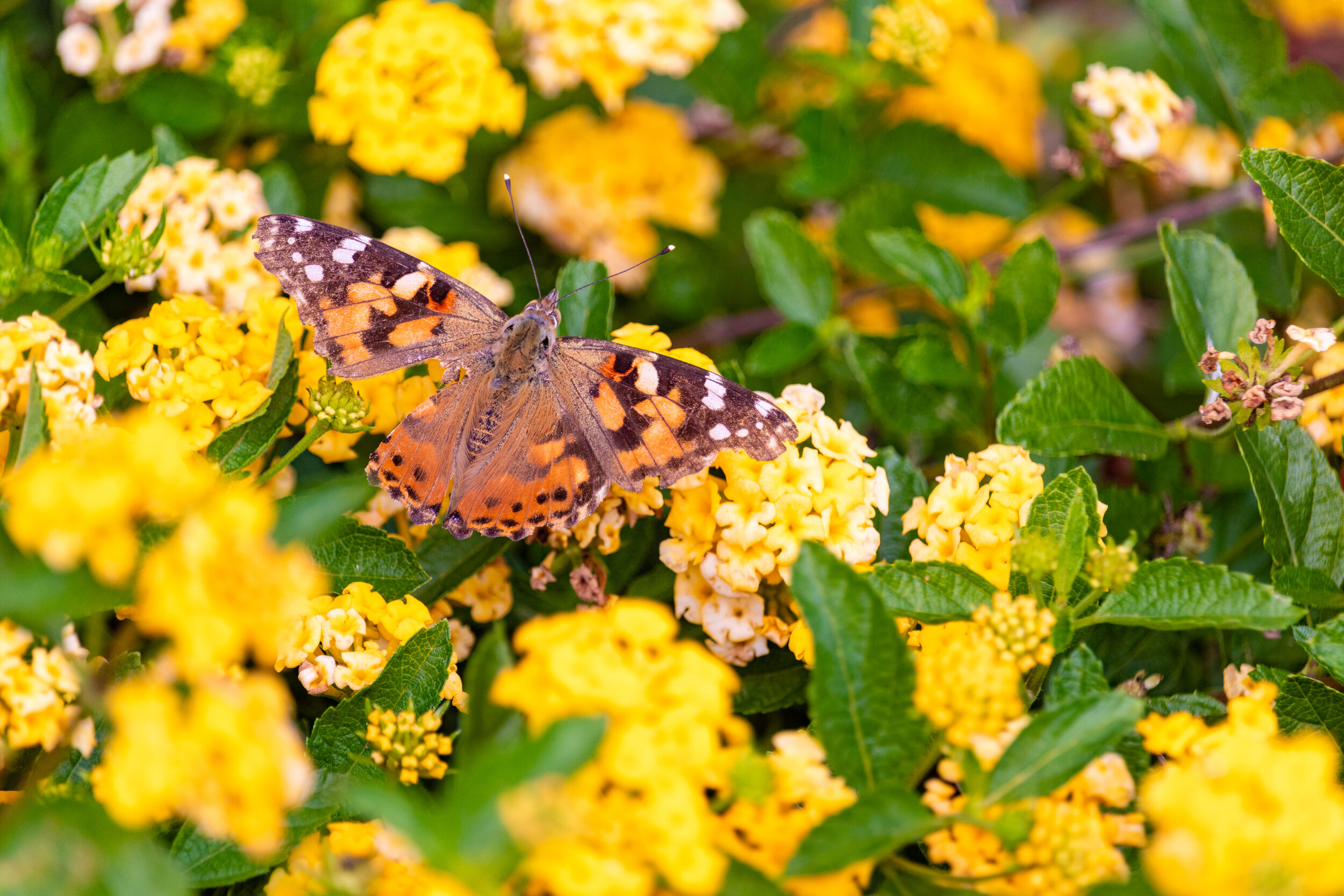9 TIPS FOR ATTRACTING SOUTH TEXAS BUTTERFLIES
A butterfly garden is a great way to bring life to your flower bed. If you want a garden full of beautiful monarchs, and other butterflies, follow these 10 tips for attracting butterflies to your backyard.
01
of 10
Pick a Sunny Location
Butterflies worship the sun. Any time spent observing butterflies in a butterfly garden or the wild, you’ll notice they spend most of their time basking in the sunshine. Like all insects, butterflies are ectotherms, meaning they can't control their body temperature internally. So, they rely on the sun's energy to warm their bodies. This is especially important on cooler days because when the temperatures dip below about 55º F, butterflies can't fly. You'll often see a butterfly perched on a rock or leaf in a sunny spot, with its wings extended, warming up its flight muscles.
Also, most good nectar plants require partial to full sun. Plant your garden in an area that gets a solid 6 hours or more of sunshine every day. Pay attention to the seasonal changes, too. The best site for butterflies will get lots of sun from early spring to late fall, not just in the summer months.
02
of 10
Shield Butterflies From the Wind
South Texas winds can be a lot for most people to handle, much more so butterflies. If it takes a lot of energy for the butterflies to battle the wind currents in your backyard habitat, the site won't be as beneficial to them for gathering nectar.
Try to place your nectar and host plants where the house, a fence, or a line of trees will buffer the wind. Planting taller shrubs or trees will also block the heavy winds from your butterfly garden.
03
of 10
Provide Sources of Nectar
The key to attracting butterflies is nectar and lots of it. Butterflies that overwinter as adults need nectar sources early in the season, and fall migrants, like monarchs, need plenty of nectar to fuel their long journeys south. Nectar is easy to find in the summer when most flowers are in bloom, but does your backyard offer nectar sources in March, or October?
Try growing some nectar plants, such as phlox, goldenrods or tickseed.
04
of 10
Plant a Range of Flowers
Butterflies are diverse creatures, and they require different sources of food. Large butterflies, like swallowtails and monarchs, prefer large, flat flowers that give them a good-sized landing area. While smaller butterflies, such as hairstreaks, coppers, and metalmarks, won't be able to drink from the deep nectaries of large flowers. When choosing flowers for your butterfly garden, try to pick a variety of flower shapes, colors, and sizes to meet the needs of different butterflies. However, plants with clusters of smaller flowers (milkweeds, for example) will attract butterflies of all sizes.
05
of 10
Plant Flowers in Groups
Butterflies are quite nearsighted. At a distance, most things appear blurred but once they get within 10 to 12 feet of something, they can see it quite well. On the other hand, however, butterflies are quite good at discriminating colors, and can even see reds bees, which bees cannot. What does this mean for your garden? To attract the most butterflies, you should plant your flowers in large groupings. Large areas of the same color will be easier for the butterflies to see from a distance and will encourage them to come in for a closer look.
06
of 10
Provide Space for Caterpillars
Remember, your garden will include several different caterpillars and you need to feed the larvae, too, not just the adults. And female butterflies will be cruising your garden, looking for places to lay their eggs.
Some species are specialists, requiring host plants from a particular genus or family. Other butterflies aren't as picky and will deposit eggs on a range of plants. Many caterpillars feed on trees and shrubs, so include some woody plants in your habitat. As a bonus, they'll provide shelter for overwintering or roosting butterflies, too.
07
of 10
Make Puddles
Butterflies need to drink, but since they can't drink from birdbaths or fountains, they get their water by taking up moisture from mud puddles. Butterflies also get important minerals by drinking from puddles. A complete butterfly garden will include one or more puddles. Sink a bucket in the ground, fill it with sand, and make sure to wet it each day. If you use drip irrigation to water your garden beds, this can also provide puddle spots.
08
of 10
Separate your Birds and Butterflies
Having a thriving garden tends to attract various birds. While creating a backyard wildlife habitat for both birds and bugs is a great thing to do, you do need to think of the predator-prey relationship. Remember, birds prey on insects! If you place a birdbath right in the middle of your butterfly garden, you're providing a one-stop-shop for hungry birds. Consider placing bird feeders in another section of your yard, just so it isn't quite so easy for birds to find the buffet of caterpillars in your garden.
09
of 10
Provide Cover Over Winter
We tend to think of butterflies as summer insects. Ever wonder where they go in the winter months? Yes, monarch butterflies migrate to Mexico, but most of our butterflies survive the winter by simply hiding out until warm weather returns. So what does this mean for your butterfly habitat? Think about how you can provide winter shelter for butterflies and moths in different life stages. For example: don’t rake all your leaves! Leave the fall leaf litter in at least part of your yard for hibernating caterpillars. Brush piles and stored firewood also make excellent shelter for overwintering butterflies.
Source: Hadley, Debbie. "10 Tips for Attracting Butterflies to Your Backyard." ThoughtCo, Oct. 11, 2019, thoughtco.com/attracting-butterflies-to-your-backyard-1968212.

